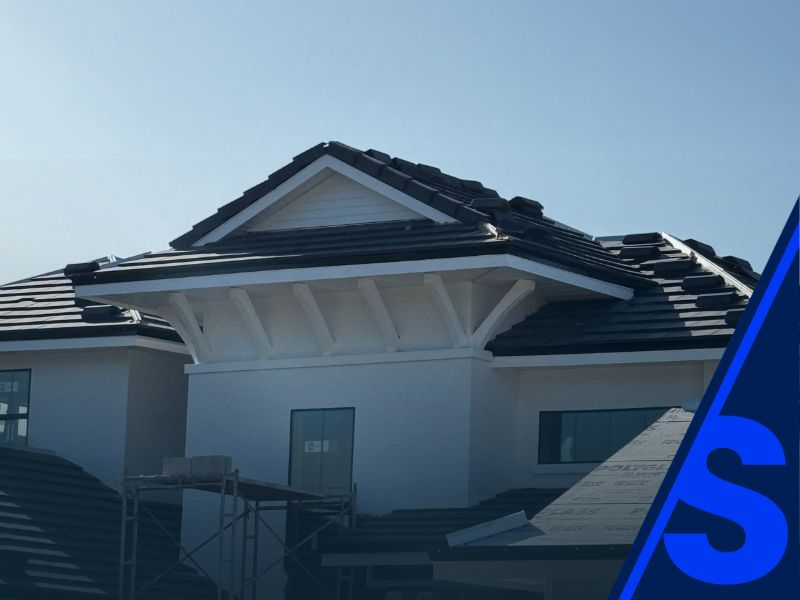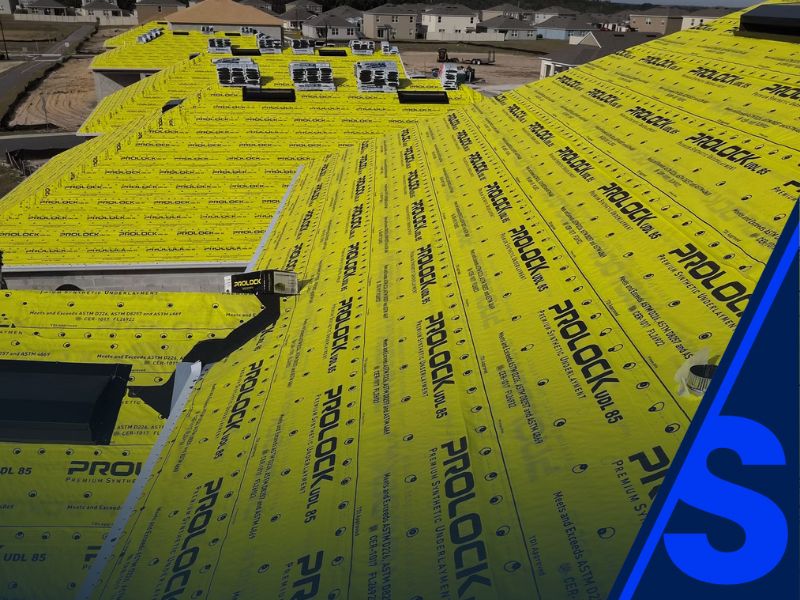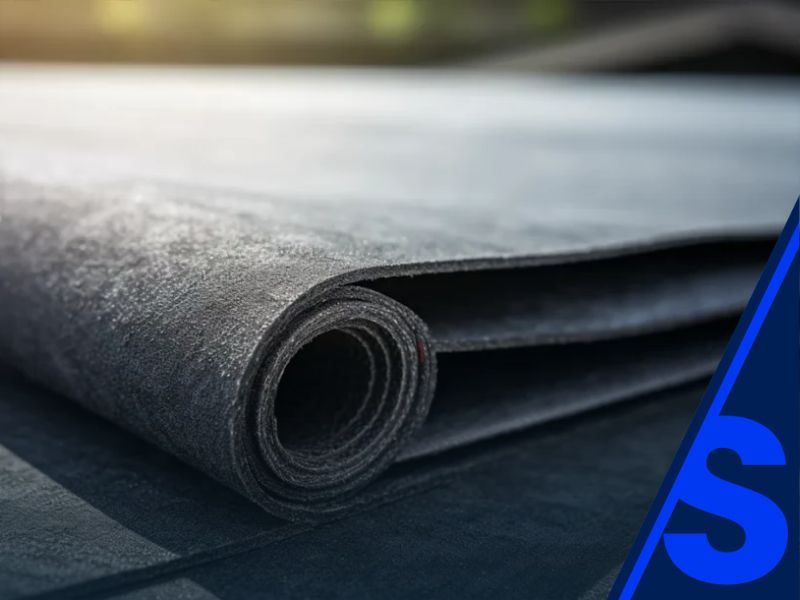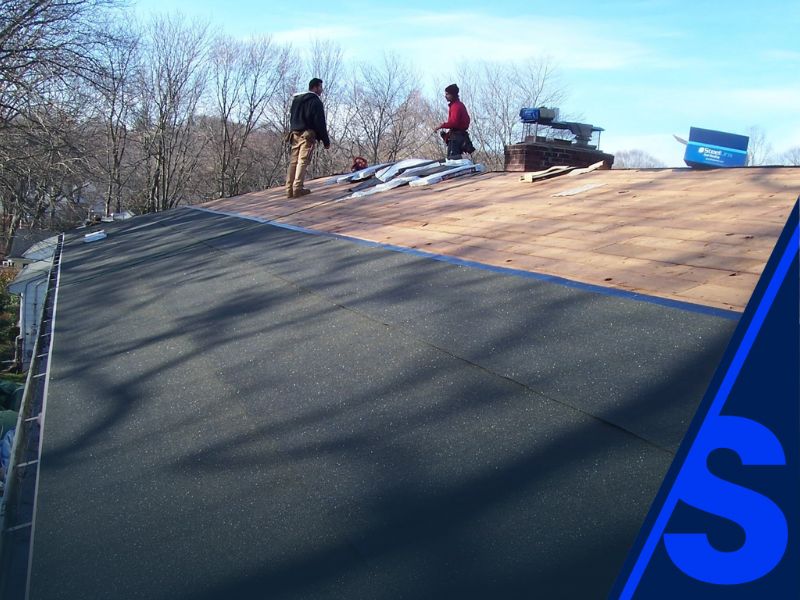Table of Contents
Choosing the right underlayment is one of the most important decisions a builder makes when planning a roof system. While traditional felt products have long been used, today’s synthetic roof underlayment offers a stronger, more reliable layer of protection that better meets the demands of modern construction. With enhanced resistance to moisture, UV protection, and long-lasting durability, synthetic underlayments help protect your roof and simplify installation for contractors and roofers.
This article is designed for builders who want to understand the pros and cons of synthetic underlayment, how it compares to traditional asphalt felt products, and why it has become the industry standard for roofing underlayment for sloped roofs.
What is Synthetic Roof Underlayment?
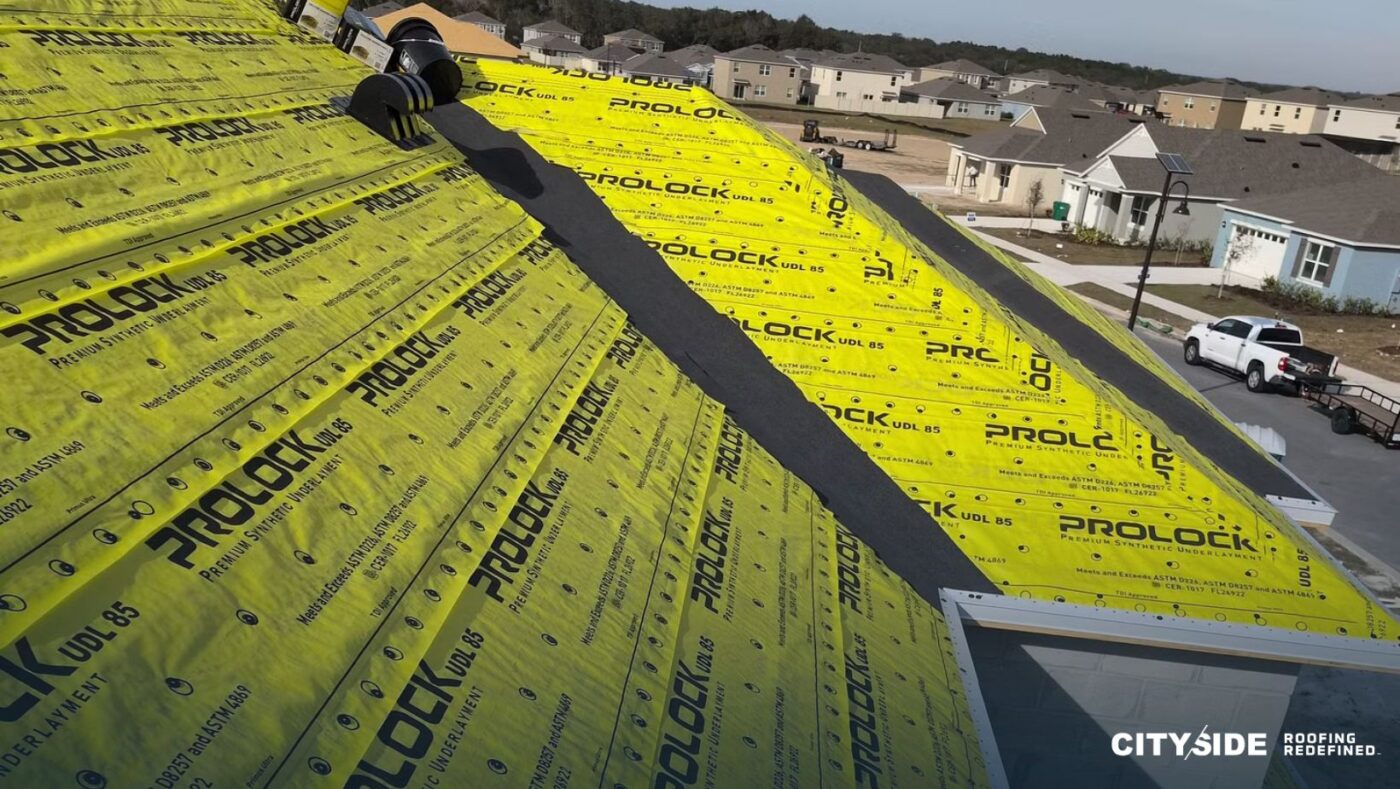
Synthetic roof underlayment is a high-performance alternative to traditional felt underlayment. It is typically made from polymer-based, non-woven materials designed to act as a barrier between the roof deck and the final roof covering such as shingles or metal roofing.
Builders rely on synthetic underlayment because it provides superior resistance to moisture, tear strength, and walkability compared to asphalt-saturated products. By creating a waterproof and durable secondary layer of protection, this system gives contractors confidence in both short-term weather resilience and long-term roof longevity.
When installed properly, synthetic roofing underlayment for sloped projects helps maintain the integrity of the roof deck even under extreme conditions.
Why Builders Are Moving Away from Traditional Felt
Traditional felt products such as 15 felt or 30 felt have served the industry for decades, but their limitations are clear in today’s demanding construction environment. Felt underlayment can wrinkle, tear, or dry out or leach oils over time, compromising performance.
Synthetic underlayment, on the other hand, is lightweight, resistant to mold growth, and engineered to last longer under exposure. This durability enhances builder confidence while reducing callbacks related to premature failures. Many contractors now avoid traditional asphalt felt products because they cannot provide the same secondary layer of protection as synthetic alternatives.
How Synthetic Underlayment Performs in Modern Roof Systems
The main purpose of roof underlayment is to serve as a protective barrier between the top of the roof deck and the roof covering. Synthetic materials deliver superior performance compared to traditional asphalt felt products in several key areas:
- Moisture resistance to prevent leaks into the deck
- UV protection for temporary exposure during installation delays
- Tear resistance for improved handling and fewer laps across the slope
- Walkability and traction to enhance jobsite safety
Builders who need consistent, code-compliant outcomes across multiple projects find synthetic roof underlayment to be the best choice for both shingle and metal roofing applications.
Key Differences Between Synthetic and Felt Underlayment
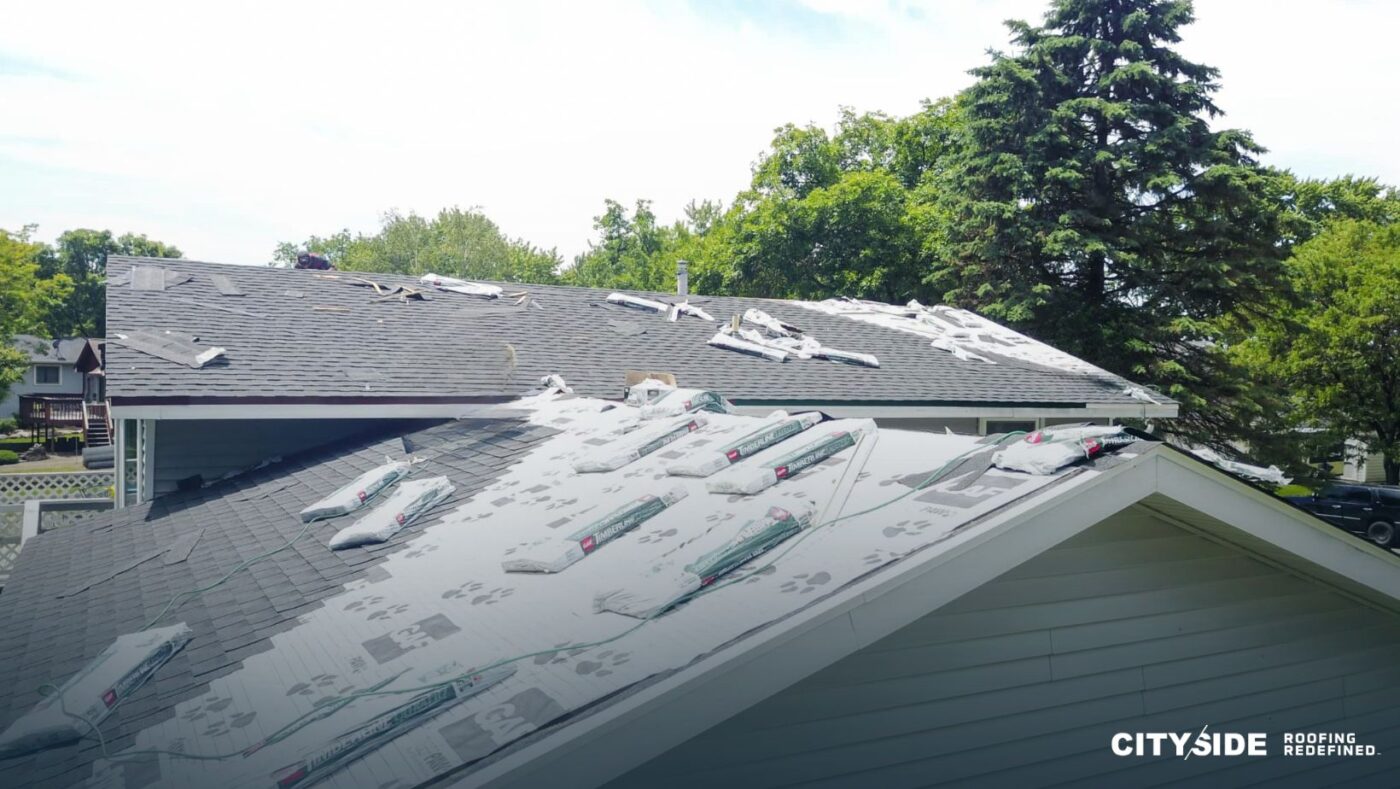
The comparison between synthetic and felt underlayment highlights why builders increasingly choose synthetic:
- Synthetic underlayment is mechanically attached and designed to resist blow-offs, while felt can tear under stress.
- Traditional felt can wrinkle when exposed to moisture, but synthetic underlayments remain smooth and easy to install.
- Felt weighs more per roll and requires more laps, whereas synthetic is lightweight and designed for fewer laps with long-lasting coverage.
This clear performance advantage ensures contractors can install roof systems more efficiently without compromising durability or code compliance.
ASTM Standards and Why They Matter
For builders, ASTM standards provide assurance that roofing materials meet minimum performance requirements. Traditional felt is tested under ASTM D226 and ASTM D4869, which outline specifications for asphalt-saturated felt underlayments.
Synthetic products often exceed ASTM standards with enhanced tear resistance, UV protection, and long-term durability. Many premium options also comply with ASTM II and ASTM testing requirements, ensuring they perform well under demanding conditions. Builders should always verify ASTM compliance when specifying synthetic roofing underlayment for sloped projects.
Installation Considerations for Builders
Proper installation of synthetic roof underlayment is critical for performance. Builders and contractors should focus on:
- Securing the underlayment with nails or other approved fasteners to prevent blow-offs
- Maintaining consistent lap coverage to create a seamless secondary layer of protection
- Ensuring proper alignment along the slope of the roof to avoid gaps or exposed seams
- Following manufacturer guidelines for mechanically attached systems and anti-skid top surfaces for better walkability
Partnering with a qualified roofing contractor ensures installation aligns with ASTM requirements, project specifications, and building codes.
Performance Under Shingles or Metal Roofing
Synthetic underlayment is compatible with a wide range of roof coverings, including asphalt shingles, slate, and shingles or metal roofing systems. Builders prefer synthetic because it offers a strong, durable base that resists moisture and enhances adhesion of the roof covering.
This compatibility means fewer project delays and more predictable long-term performance. Whether installed under asphalt shingles or high-end slate, synthetic materials provide the durability and barrier protection builders demand.
Durability and Longevity of Synthetic Roof Underlayment
Durability is one of the biggest advantages of synthetic roof underlayment. While traditional felt can degrade when exposed to UV rays, synthetic products include UV protection and can remain exposed for weeks before final roof installation.
Synthetic materials are resistant to mold, vapor intrusion, and moisture, ensuring the roof deck remains secure even under challenging conditions. Many builders report fewer callbacks related to leaks or underlayment failure, reinforcing synthetic underlayment as a long-lasting and cost-effective choice.
Builder Benefits of Synthetic Underlayment
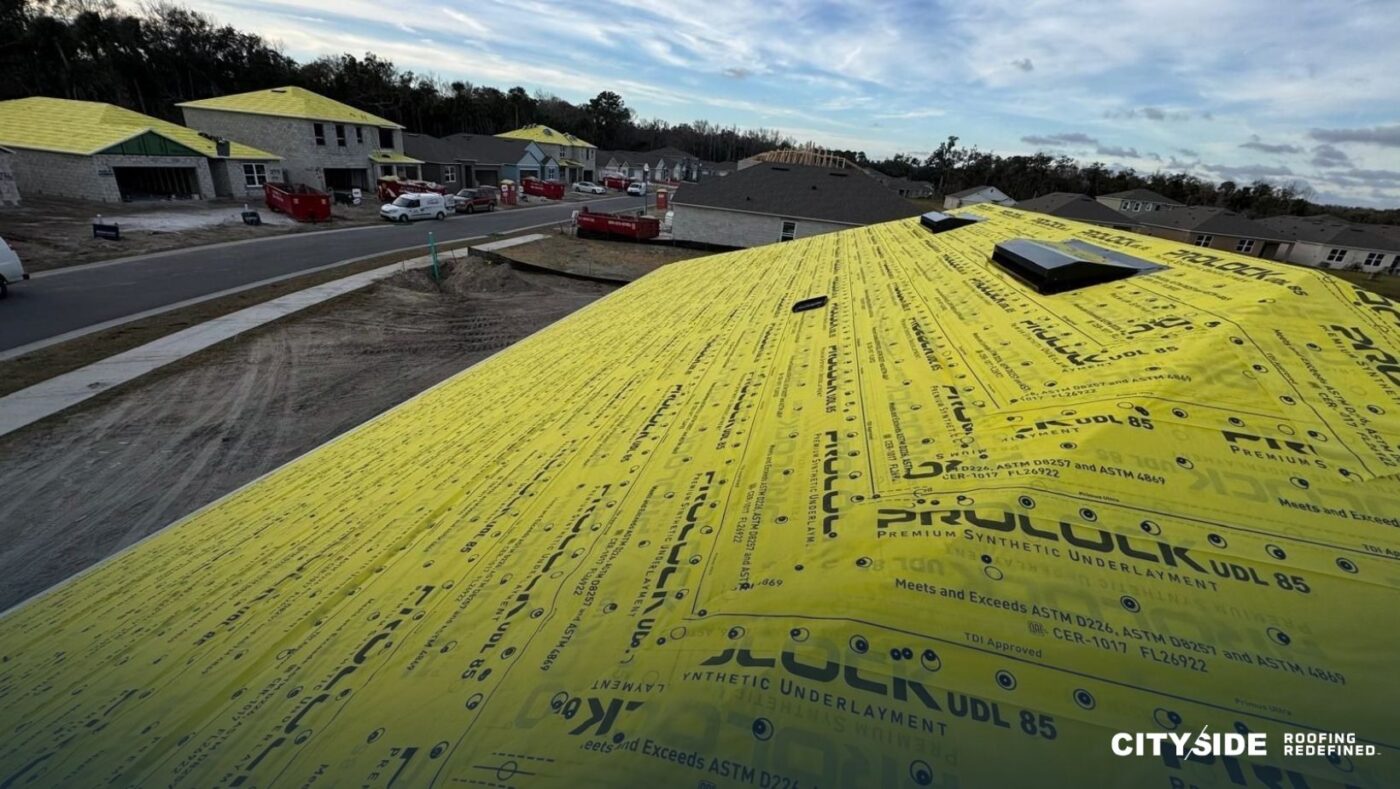
Builders prefer synthetic roofing underlayments because they deliver measurable improvements in workflow and quality control:
- Lightweight rolls reduce labor strain and speed up installation.
- Walkability and traction improve jobsite safety for roofers.
- Longer roll lengths mean fewer seams and reduced risk of water penetration.
- Consistent material quality enhances reliability across multiple projects.
Partnering with CitySide Roofing Services ensures synthetic underlayment is installed to manufacturer and code specifications, protecting builder warranties and project timelines.
Common Questions About Synthetic Roof Underlayment
Is synthetic underlayment waterproof?
Yes, synthetic roof underlayment is designed to be water-resistant and provides a strong secondary layer of protection for the roof deck.
How does synthetic compare to 15 felt?
Synthetic is more durable, resistant, and lightweight than 15 felt, which can wrinkle, tear, and degrade over time.
Can synthetic underlayment be used under all roofing materials?
Most synthetic products are compatible with asphalt shingles, slate, and metal roofing, making them versatile for a wide range of projects.
Builder Takeaways
- Synthetic underlayment provides a superior barrier compared to traditional felt underlayment.
- Builders benefit from enhanced durability, UV protection, moisture resistance, and fewer laps per slope.
- ASTM compliance ensures quality and long-term performance.
- Installation best practices reduce risks of blow-offs, wrinkles, and seam issues.
- Partnering with a professional roofing contractor in Florida ensures proper application and warranty compliance.
Synthetic roof underlayment is no longer just an upgrade over felt underlayment; it has become the industry standard for modern construction projects. Builders who specify synthetic materials enhance project quality, streamline installation, and protect their reputation for delivering durable and long-lasting roof systems.
Ready to protect your next project with synthetic underlayment? Contact CitySide Roofing today to schedule a consultation and ensure your roofing system is built for long-term performance.
